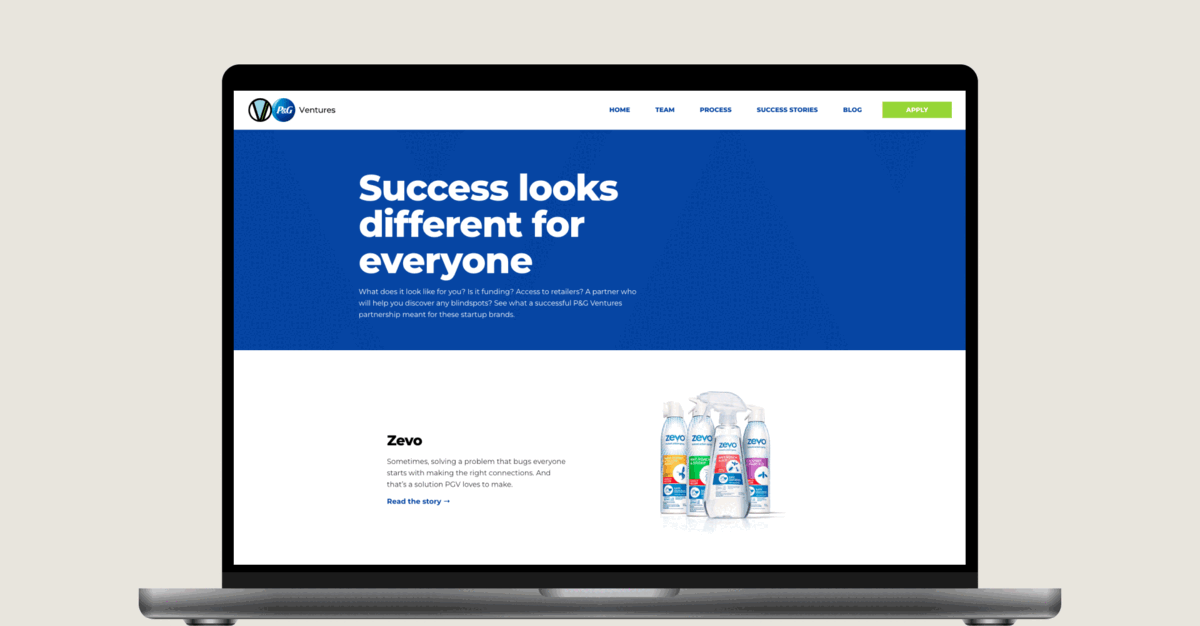Key takeaways
Recent years have been marked by a noticeable increase in corporate venturing activity. According to Mckinsey, corporate venture investments have increased 32% YOY from 2013 to 2019, and it’s easy to see why. Building new ventures gives companies access to valuable new technologies, markets and revenue streams - a much-needed competitive edge in today’s fast-moving landscape.
In fact, a growing number of companies are taking their venturing strategy to the next level by launching their own corporate incubators or accelerators. Today, about 75% of the top Fortune 100 companies have an active venturing unit, including Walmart, Amazon, and Alphabet (just to name a few) - and the results so far have been stellar:
- 87% of incubated ventures are still active after five years (only 44% of their independent counterparts make it past that mark).
- 84% of incubated ventures end up adding to the parent company’s ecosystem, strengthening its competitiveness and boosting innovation.
These success rates are no doubt partially due to each venture unit’s ability to attract world-class startups. The challenge? With so many companies embracing strategic collaborations as part of their innovation strategy, marketing your venture unit to attract top startups has become more important than ever.
To help you navigate this part of your journey, we’ve outlined seven tips designed to engage and captivate the interest of talented startup founders.
1. When possible, ditch the jargon
It’s ok to sprinkle a few buzzwords (e.g. lean approach, design thinking, accelerated pace) here and there, but don’t let it get in the way of your messaging. Most startup founders and entrepreneurs are looking for straightforward, transparent information that conveys a clear, confident message.
The use of excessive jargon could come across as vague and put you at a disadvantage if a competitor’s messaging comes off as more transparent, trustworthy and honest.
Example:
Google’s Area 120 is a great example, featuring exactly what it does, using uncomplicated, no-frills language.

2. Be clear-cut and informative
Most founders and entrepreneurs are busy getting their ventures off the ground. The less time they have to spend digging for information, the better. A great way to stand out from the crowd is to ensure your offering is easy to find, follow and understand. Candidates should be able to visit your website and have the following questions answered:
- What kind of startups do you engage with (e.g. industry? Solving a specific problem? etc.)
- What type of program do you offer? Do you offer more than one type?
- Is your program location specific? Available in multiple locations? Remote?
- Is it a standard program or customised to every startup?
- What are the requirements? What are the deadlines?
- What exact benefits does your program offer?
Making this information easy to access and adhere to will add to your credibility and make it easier for startup founders to apply.
Example:
Deutsche Telekom’s hub:raum does a great job of answering all these questions with an easy-to-navigate website flow.

Each “Discover more” button takes the viewer onto a page listing a more in-depth program description, its focus, benefits, requirements and timeline - all in just two clicks.
3. Stay active and consistent across all channels
A surprising number of venture units are inconsistent in both their activity and branding when looked at across different channels. Examples include:
- Outdated program or event information on their website
- Names and branding that vary across channels
- Social media accounts that post sporadically or are completely inactive
Aside from negatively impacting your credibility with new potential entrants, it also makes it hard for external researchers to create content that would help strengthen your venture unit’s reach. Avoid this pitfall by making your web presence a priority and ensuring:
- You’re active across different channels
- Your branding and messaging stay consistent
- Your website is always up to date with your latest news and information
Example:
The Unilever Foundry is a good example. Although they don’t post that often, they remain active and consistent in branding and messaging across different channels.

4. Use visuals and imagery
The old adage "a picture is worth a thousand words" is true in almost every case, and venture unit marketing is no exception. Startup founders will be looking to join venture unit communities that can provide the best possible support and experience.
Words are a great way to tell your candidates about what makes your program great (e.g. its facilities, world-class team, successful graduates, etc.) - but backing those words up with images will supercharge your message. These are just some of the things you should consider showcasing through pictures and graphics:
- Active workshops that include coaches and current venture unit alumni
- Startup teams that have reached specific milestones
- Graphics that add to your copy (e.g. graphs, diagrams, etc.)
- Pictures that feature your facilities and other resources
- Pictures of recent events (e.g. pitch days)
Think of these visuals as a window into your venture unit (because that’s exactly how potential candidates will see them).
Example:
Bosch’s Grow Platform does a great job of adding dynamic pictures and graphics that showcase the vibe of its program as well as the beauty of its facilities.

5. Showcase your success stories
One of the best ways to inspire and attract top startups is to showcase your previous successes - the more detailed, the better.
Many venture units post and publish blog articles that feature new entrants as well as successful graduates, giving their followers tidbits on the progress of their startups throughout the program. These stories help humanise the venture unit journey, making your program more memorable and transparent than others. A powerful competitive edge against less open and personal program options.
Example:
P&G Ventures has an entire section of its website dedicated to its top venture success stories. Each one depicts the journey of how a venture went from idea to thriving business, complete with details about the creators of the solution, the network that helped grow the venture and P&G’s role in the process.

6. Feature your team
Joining a venture unit usually means the founder will be working with the program's team daily. In fact, the team they’ll be working with can make or break the new venture (think of the impact a teacher or professor can have on your final grade).
Featuring your team on your venture unit’s website can help create trust and confidence in potential entrants. Your team’s expertise, industry know-how and entrepreneurial experience could be the tiebreaker that ensures the next big venture goes to you and not a competitor.
Example:
Vodafone Power Lab features its mentors underneath its program description, complete with pictures, titles and a link to their LinkedIn page.

7. Move beyond the typical success metrics
Many incubators post success metrics on their website, including things like evaluated ideas, occupancy capabilities and the startups that have graduated from their program.
An effective way to differentiate yourself is by moving beyond the typical metrics that show you gauge success in a more meaningful way. Good examples of metrics to assess and publish include:
- New jobs that got created through the success of your ventures
- Total number of sales or external investments raised
- Alumni satisfaction rates
- Any sustainability goals your incubator has reached or contributed to
When choosing your success metrics, try to opt for things that have a positive impact on the world. Many top founders are working towards that very goal.
Example:
Although Bethnal Green Ventures is an independent venture unit, not a corporate one, they feature the type of success metrics many of today’s top startup founders look for.

Final thoughts
It’s an exciting time for companies embarking on their own venture unit journeys. Inspiring examples are popping up across different industries, with companies adapting the model to meet their unique needs and making game-changing breakthroughs as a result.
However, as more venturing units enter the market, competition for the best startups will inevitably increase, making venture unit marketing a bigger priority than ever. Examples of venture units mastering the marketing game include Lufthansa Innovation Hub, BASF Chemovator and Comcast LIFT Labs Accelerator. Be sure to check out their websites and social media channels for a nice dose of inspiration.
______
Are you interested in setting up your own corporate venturing unit? We can help you leverage your unique corporate assets to build a pipeline of game-changing ventures.
60 Corporate Incubators Shaping Our Future
Discover how top corporations use incubators to drive innovation and unlock new revenue streams.









